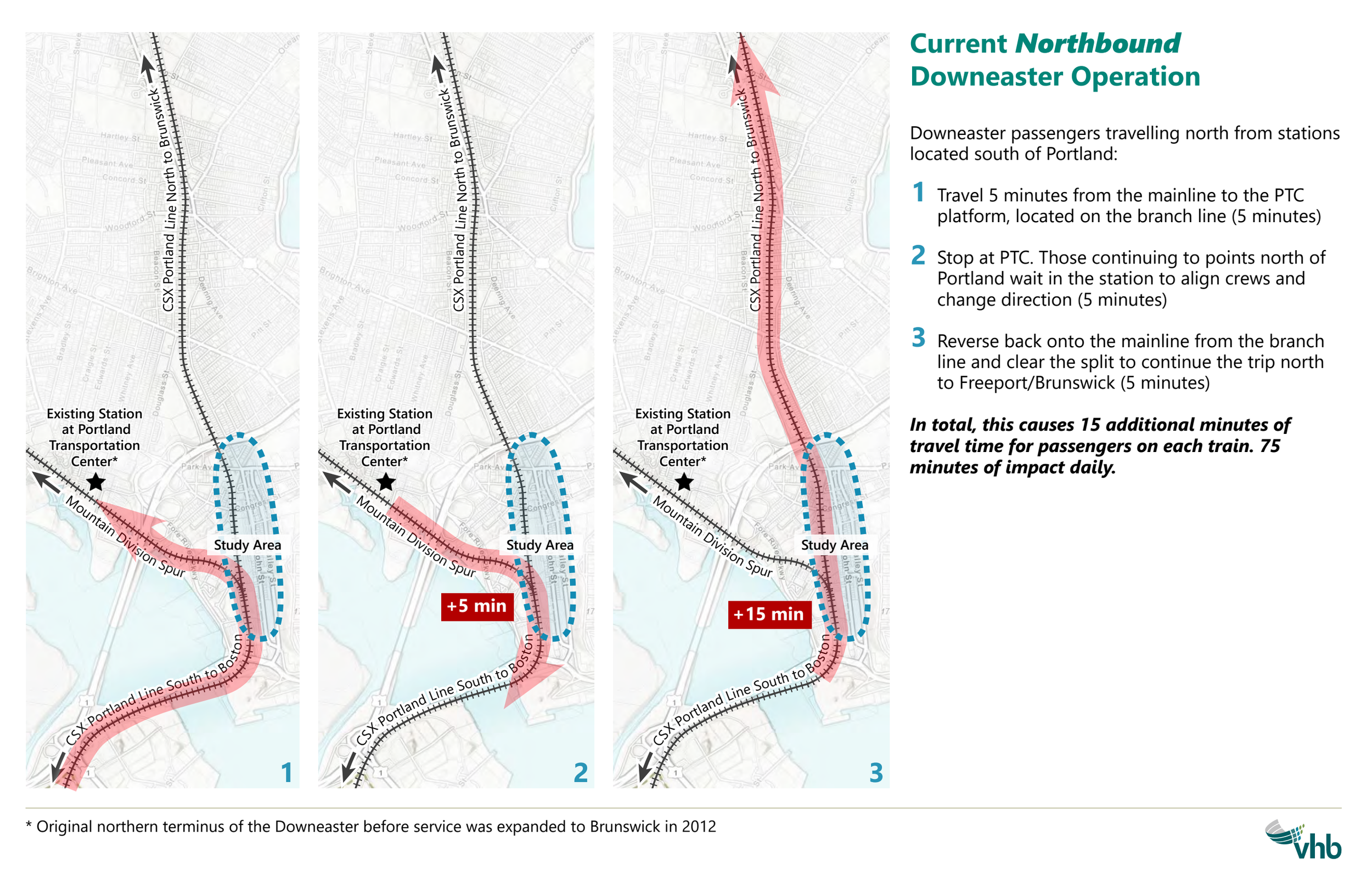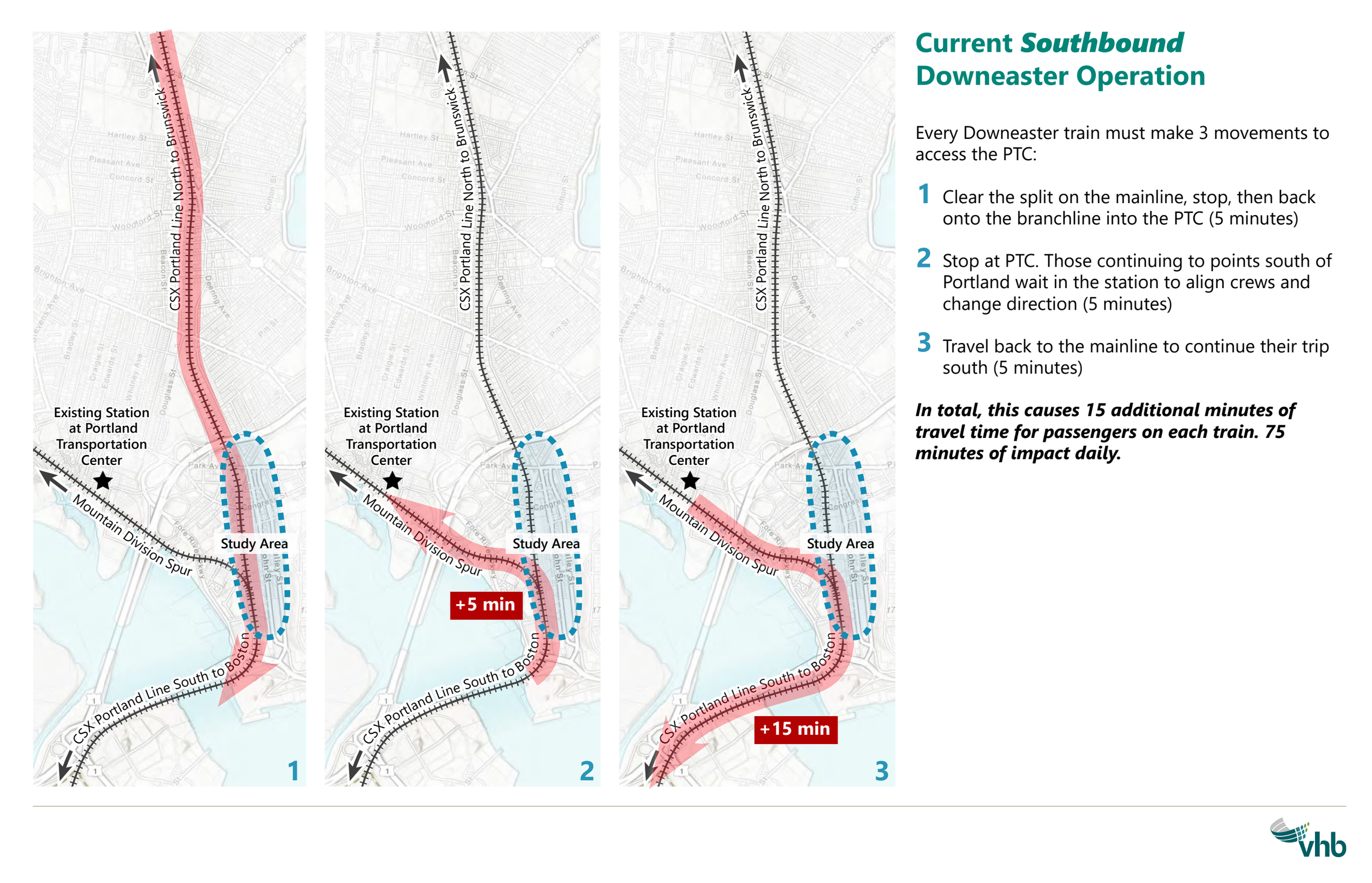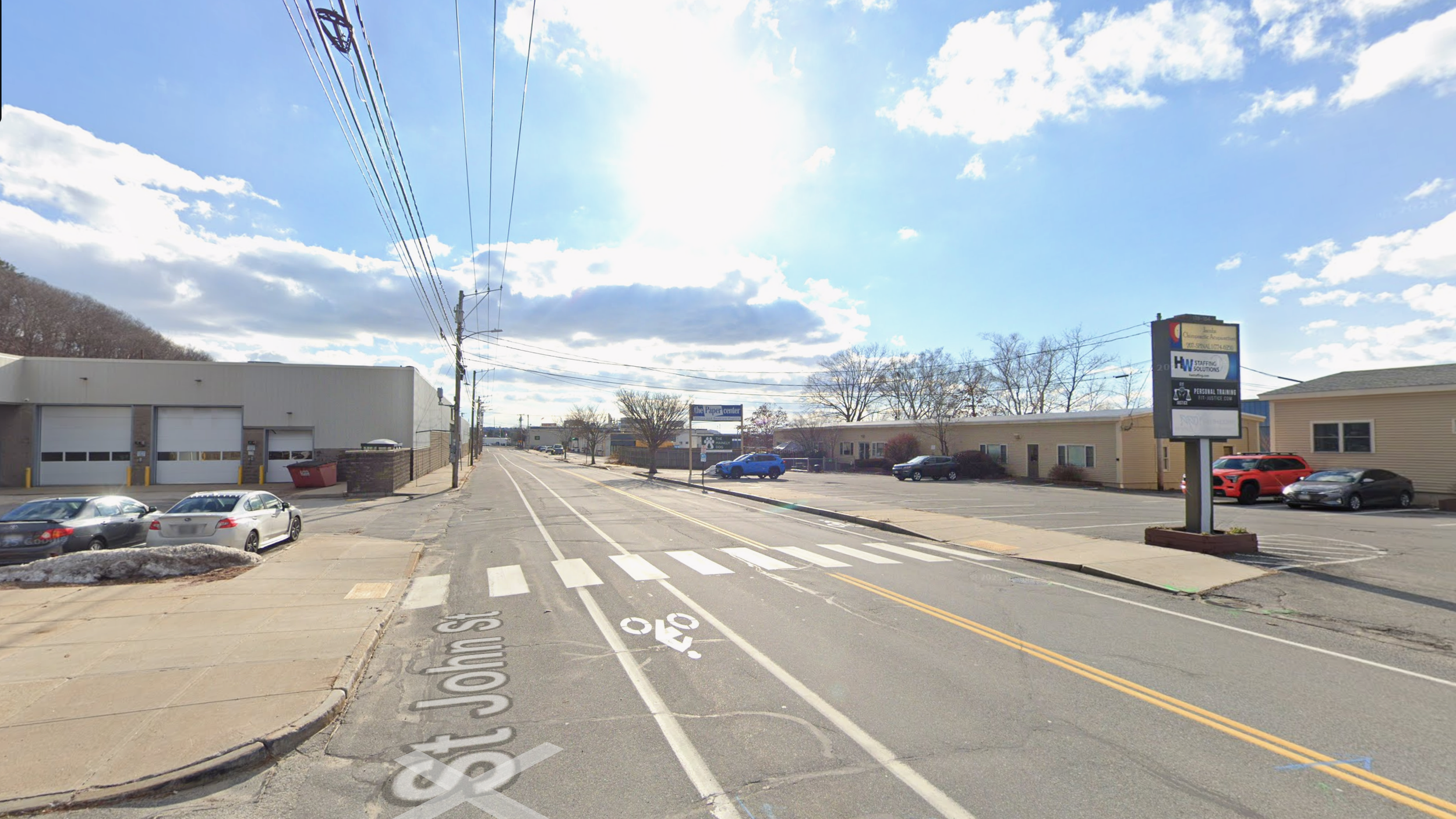Portland’s Train Station May Be Moving - Here’s What You Need To Know
Talks are currently underway regarding moving Portland’s train station, which is currently located at the Portland Transportation Center at Thompson’s Point. Multiple hours of discussion and debate occurred at the Sustainability and Transportation Committee on October 9th, 2025, regarding where to put the train. The majority of the council was present at the meeting, hearing presentations from both City staff and railway officials regarding the topic.
As discussion wound down, the Committee ultimately decided to pursue a compromise, first and foremost. If attempts fail, then studies for other alternative sites in Portland are to be conducted.
Why does the train station need to be moved?
Currently, trains must make time-consuming maneuvers in order to reach the station at the Portland Transit Center. The Transit Center is on a branch - a rail line offshoot that does not connect back to the primary, north-south corridor that most travel occurs on. The two lines are connected by a “Y”-shaped junction between Mercy Hospital and the County Jail.
As a result, both northbound and southbound trains must halt on the rail line and drive in reverse to get back onto the main line. This adds 15 minutes to each trip by train, regardless of where you are going. If this is addressed, the times savings could enable an additional trip in each direction each day.


Where could the station be moved to?
A study conducted by NNEPRA revealed Three sites that had the potential for development:
Site 1, Behind Amato’s and McDonald’s on St. John Street.
This site was suggested as it could, in theory be developed. However, doing so would introduce multiple other train operation issues. As such, it is not considered a viable alternative.
Site 2, Union Plaza.
This is the site of the original Union Station, before it was demolished in 1961 at the peak of Urban Renewal.
Both the City and the Urbanist Coalition support this location.
Site 3, Next to Tyson on southern St. John Street.
This is currently an empty parking lot.
NNEPRA directly supports this site, and Maine Med indirectly.
Who is involved with moving the train station?
There are currently three major organizations in the discussion:
City Council & Staff
City Council must give approval for the new location, if the station is moved.
NNEPRA, A.K.A. The Northern New England Passenger Rail Authority
NNEPRA wrote the plan for moving the station, and is the main organization pushing it forward.
Maine Medical Center
Maine Medical Center owns the buildings and land at Site 2, having purchased them in 2022.
In late 2024, the City Council unanimously approved ReCode, a multi-year, tip-to-tip zoning ordinance rewrite. As part of the city’s plans, the lots at the intersection of Congress & St. John were rezoned to build homes and businesses centered around transit, as it had been before the 1960s. The southern portion of St. John Street remained zoned for industrial use.
What does Maine Med have to do with this?
Maine Medical Center owns the building and land at Site 2, having purchased them in 2022. While their exact plans are unknown, it is clear that Maine Med hopes to redevelop the lot at some point in the future. The City Council wishes to discuss the matter with Maine Med and reach a compromise that puts the station at Site 2 in some manner.
Despite their importance to this issue, Maine Med has been stonewalling the City. In a brief communication letter, Maine Med told the Committee that they held no interest in selling the property to NNEPRA . In addition, Maine Med officials were not present at the Committee meeting at all.
Rather than give up hope, the Committee has commanded City staff to organize and facilitate face-to-face negotiations between the Council, NNEPRA, and Maine Med. Most councilors were present at this meeting, and those that spoke did so in support of Site 2, even if they could not vote. Therefore, it can be presumed that the Council as a whole does not wish to give up the possibility of compromise without meeting those at Maine Med who have decision-making power.
Why do NNEPRA and the City disagree on the location?
There are two major reasons - Disagreements about the feasibility of developing the areas around each site, and disagreements about the future of the Mountain Division rail line.
The City wishes for the station to be places at Site 2. This has multiple advantages :
The station can be comfortably and easily reached by foot or bike from the peninsula.
Congress is the main pedestrian and bike artery cutting across Portland. By building the station here, both city dwellers and visitors can access the station easily.
Site 3 - which NNEPRA prefers - is located in a bleak industrial area, cut off from the rest of the city by the steep hill of the Western Prom. One would have to go out of their way to reach it by foot or bike, incentivizing driving.
Strong connections to multiple major bus lines.
Lines 1, 5, 7, 9A, and 9B, and the Breeze all route through Congress & St. John. This makes travelling between the train and all of Portland’s neighborhoods, both on and off peninsula, much easier.
Site 3 only has the 1 Line routing through it. Redesigning other bus routes would add major travel delays, making the bus system as a whole less reliable.
Ease of building homes and businesses.
Multiple lots surrounding the station have parking lots and drive-throughs. Their small size make them quicker, easier, cheaper, and less risky to turn into new homes and businesses.
The lots around NNEPRA’s preferred site are fully developed for industry. Those large, heavily developed, complex lots would be very expensive, time-consuming, and risky for developers to either convert or rebuild.
NNEPRA wants to put the station to be placed at Site 3. The main argument is thus :
Ease of operations for a potential Westbrook commuter service.
Site 3 is located on the ‘base’ of the ‘Y’ intersection. If the station were placed here, NNEPRA could, in theory, establish commuter service to transfer passengers between Portland and Westbrook and beyond without having to put the train in reverse. If Site 2 is chosen, anyone from Westbrook or further afield would face the same 15 minute, multi-point turn delay they do today. This makes passenger rail service to Westbrook and beyond unfeasible.
Past Westbrook, the Mountain Division rail line has been out of commission and deteriorating for multiple decades. In addition, GP Metro is currently designing a Bus Rapid Transit (BRT) system with dedicated lanes. In this system, each station along the Westbrook-Portland line would receive a bus every 10 minutes. A 2023 study suggests that running a similar rail service could cost twice as much to operate, and four to twelve times as much to build.
Maine Med has been stonewalling NNEPRA & the City.
Maine Med owns the land on Site 2, but has been refusing to actively participate in discussion. At the committee meeting, Maine Med only provided a brief letter stating their refusal, with no reason given. Additionally, Maine Med officials di not attend the meeting at all. Rather than attempt appeasement, NNEPRA wishes to move to what they believe to be the only remaining alternative - Site 3.
The Sustainability And Transportation Committee have instructed staff to organize and facilitate face-to-face discussions and negotiations between officials of all parties, including Councilors and Maine Med. Councilors do not want to give up Site 2 without directly attempting to compromise with Maine Med’s decision makers.
Improving comfort while walking is an important part of getting more people to walk. Would you feel comfortable walking through here?
What is the stance of the UCP?
The UCP Supports Site 2, and applauds the Council for holding firm its support. We believe that a compromise in which Maine Med builds offices above the train station is the best path forward.
We recognize that NNEPRA wishes to improve service, reduce travel times, and plan for the future. These are all laudable goals, but they alone do not paint the full picture. A train station must be the shining jewel at the heart of the city, not relegated to an industrial ditch.
Of the current proposals, only Site 2 has the potential to thrive. It provides a straight shot on foot or by bike into the heart of downtown. The zoning supports building a well-connected community. Maine Med, the West End, and Parkside are only a ten minute walk away on a brightly lit, pedestrian friendly route. The bones of a strong city are already present. Site 3 does not have that supporting structure, and will fail to live up to expectations as a result.
If negotiations fail and a compromise at Site 2 cannot be reached, we ask that the City pursue other alternatives while retaining service at the current location.. The current site has transit connectivity directly to the 1 and Breeze line as well as the Concord Coach. Lines 5, 7, and 9 are all within walking distance. Over two hundred and fifty new homes have been approved for Thompson’s Point. Storefronts and concerts regularly draw crowds that take the train already. None of these things exist in a vacuum. They only succeed by working in concert with each other.
Site 3 would be a generational mistake. If we cannot set ourselves up for success, then we must not set ourselves up for failure.
Thumbnail Credit: Chris Parelius

